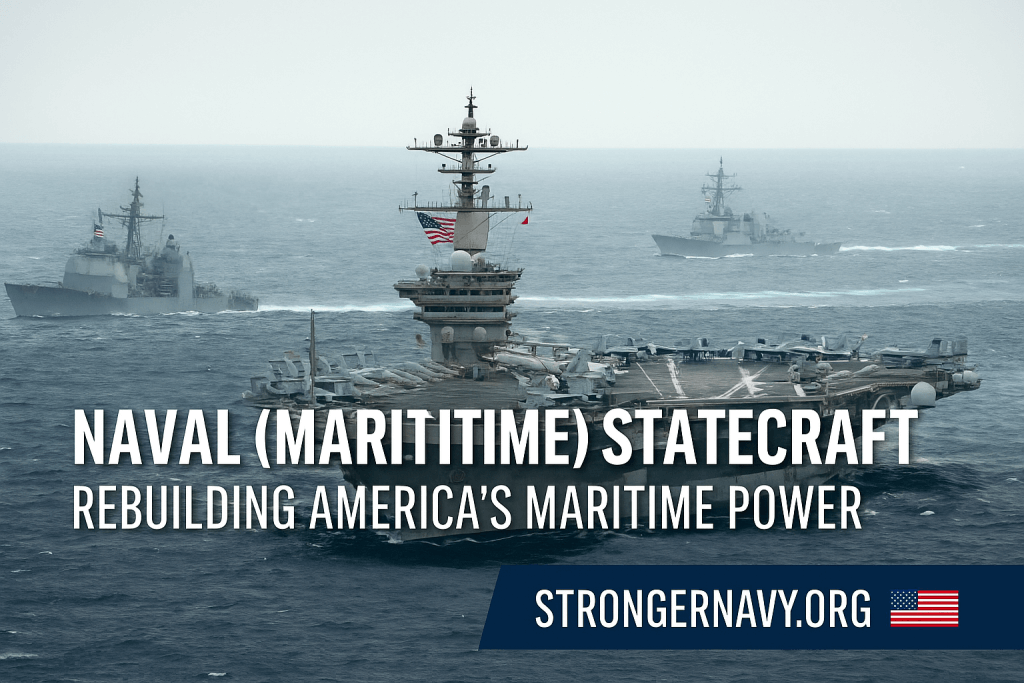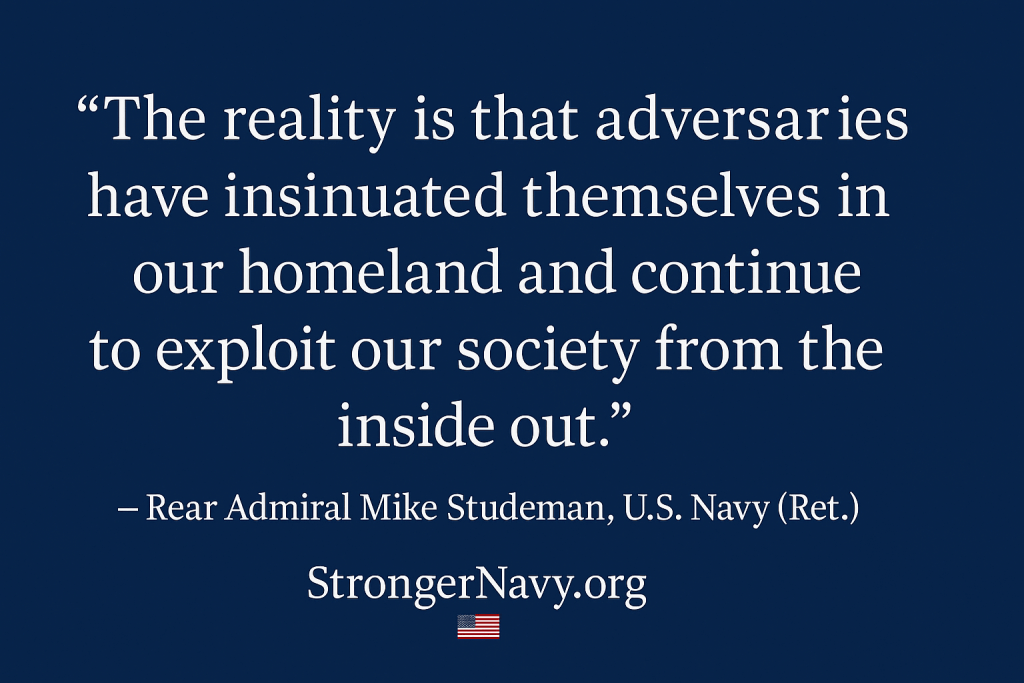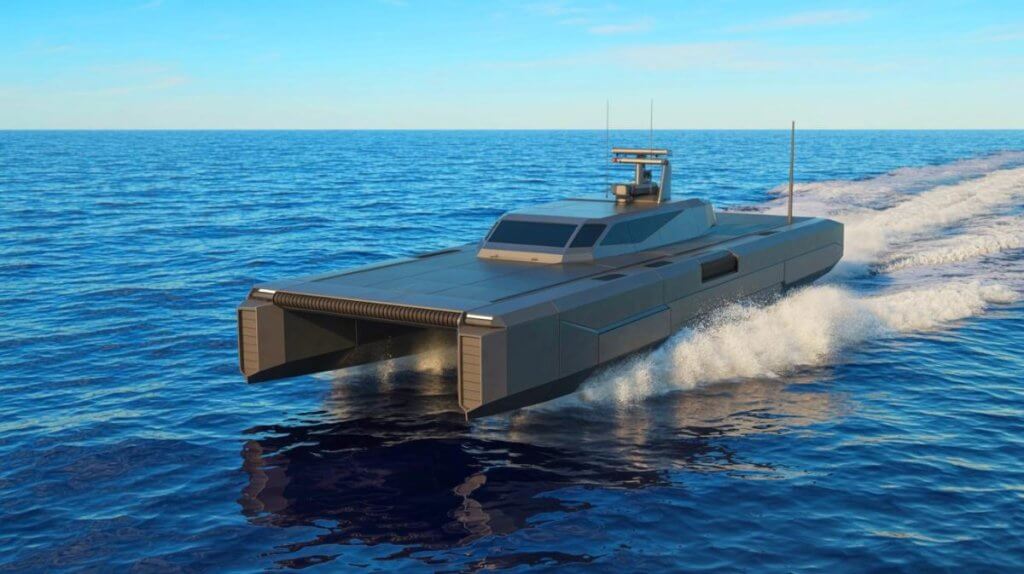

Introduction
Dan Wang’s recent interview on Interesting Times with Ross Douthat offers an intriguing argument: that China, as an “engineering state” may outbuild, out-innovate, and outlast the United States. I respect Wang’s analysis — but I believe it overstates China’s strengths, underestimates America’s, and risks mistaking curated facades for lasting power.
I speak from experience. I served as a Cold War-era Navy destroyer sailor, worked in telecommunications at AT&T, helped set standards for web technologies, and founded Americans for a Stronger Navy. In 2008, I traveled to Beijing as a guest expert at the World Wide Web Conference. That visit — on the eve of the Olympics — revealed the gap between projection and reality.
Facades and Reality
Wang contrasts Shanghai’s clean subways and manicured parks with New York’s noisy infrastructure. I saw another reality. Behind Beijing’s gleaming new airport, residential homes were bulldozed to make way for Olympic tourism. Poverty was hidden, smog choked the skies, and the environmental cost of China’s rapid growth was impossible to ignore. Having served in Hong Kong in the 1970s, I could compare its then-crystal skies with Beijing’s haze in 2008 — a stark reminder that much of China’s “progress” is extraction, not sustainability.
Systematic Extraction
My telecom and security background made me see what others missed. The building across from our Hilton bristled with antennas pointed at us. Government “observers” monitored our sessions. The million-dollar fee to host the conference wasn’t just business — it was leverage.
More troubling were the Western executives — many half my age, fresh from Silicon Valley — using unsecured phones and laptops in this environment. I spoke with a young GM engineer who had developed a novel windshield wiper. He admitted openly that it would be copied and sold back to his own company at lower cost. Yet corporate pressure compelled him to manufacture in China anyway. Days later, flying home through London, I read an FBI advisory warning Olympic visitors not to bring their cell phones. That confirmed every operational concern I had seen firsthand.
The Population Trap
Wang points to China’s vast numbers of engineers and competing firms as proof of superiority. But scale alone does not equal strength. With 1.4 billion people, China naturally produces more engineers than America’s 330 million. The question is quality and innovation, not headcount. At the World Wide Web Conference, Chinese capabilities often lagged global standards. The proliferation of thousands of solar companies reflects size, not necessarily superior organization or creativity.
Naval Realities
Wang worries that China could quickly overwhelm Taiwan and that America’s Navy might not respond effectively. My perspective as a Navy veteran is different. Amphibious assaults across a strait are among the most complex operations in warfare. China’s navy, for all its growth, remains untested in major combat, dependent on land-based missiles with finite range, and lacking the blue-water experience U.S. forces have honed through decades of global deployment. To suggest America cannot meet this challenge underestimates both our power projection and the operational realities that matter at sea.
America’s Resilience
Perhaps Wang’s greatest omission is the resilience factor. History shows America’s ability to respond decisively when existential threats become clear: after Pearl Harbor, in the space race following Sputnik, and after 9/11. The same will be true in the face of today’s strategic competition.
Even China’s own people signal doubts about their system’s sustainability. Wang himself notes the “brain drain”: wealthy families buying homes in Irvine and Vancouver, entrepreneurs relocating to Singapore, tens of thousands crossing the Darién Gap to reach America. They are voting with their feet — and their futures.
A Balanced View
I do not dismiss Wang entirely. He is right to criticize U.S. naiveté in assuming economic engagement would democratize China. He is right that corporations prioritized profits over national resilience. But his analysis is filtered through carefully curated experiences and misses the darker realities: surveillance, forced extraction, environmental costs, and intellectual property theft.
Don’t Bet Against America
China has built dazzling infrastructure and manufacturing scale. But a system built on control, imitation, and exploitation is brittle. America’s advantages remain decisive: our Navy, our innovation ecosystem, our demographics, and above all our proven resilience.
Dan Wang is correct about one thing: this is a long competition. But if history is a guide, the nation that adapts, mobilizes, and earns the trust of its people and partners will prevail. That nation is not China. Don’t bet against America.











